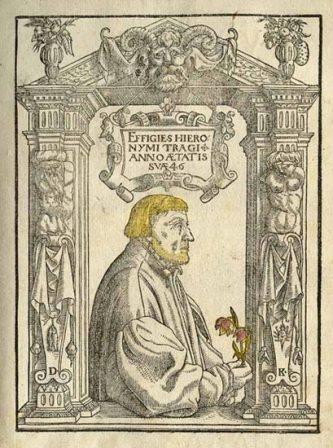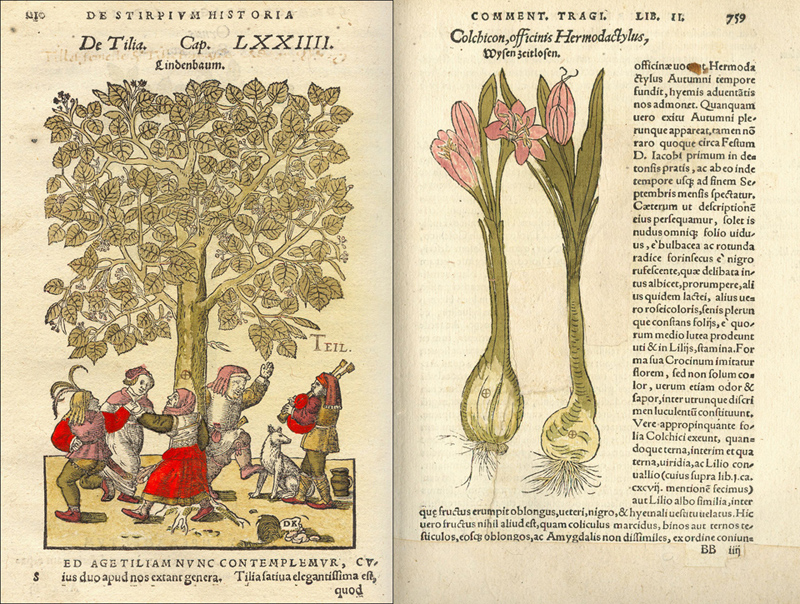Hieronymus Bock, De stirpium, maxime earum, quae in Germania nostra nascuntur commentariorum libri tres
(Strassburg: Wendelin Rihel, 1552)
Hieronymus Bock was a German botanist, physician, and Lutheran priest. He lived at Zweibrucken where he taught and took charge of Count Ludwig's gardens. Bock’s Protestantism didn’t please Count Ludwig's successor and he lost his job. He went to Hornbach, served as a Lutheran pastor, practiced medicine and developed botanical interests. Bock died in Hornbach in 1554.
Instead of following the traditional teaching of Dioscorides, Bock developed his own more scientific system for classifying plants. He seems to have travelled widely throughout the German region observing plants and he includes ecological observations.
Bocks book was originally written in German and it only became widely recognised with the publication of this Latin translation. Bock describes around 700 plants and trees, and he attempts to classify them into three groups: herbs and odoriferous plants, clovers or grasses, and trees or shrubs. This edition includes illustrations from earlier editions, images based on woodcuts from works by Otto Brunfels and Leonhart Fuchs, and others drawn and engraved by David Kandel for this edition. The Kandel woodcuts, identified by the initials "D K," number over 500.
In the wine world, Bock is noted for having the first documented use of the modern word Riesling.





